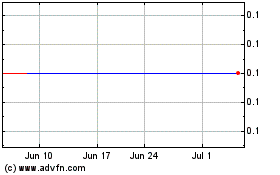By Julie Jargon and Anna Wilde Mathews
Starbucks Corp. on Monday became one of the most high-profile
employers to switch its employees to a private health insurance
exchange.
Instead of the one health insurer and three medical coverage
levels they have now, U.S. employees -- from Chief Executive Howard
Schultz to store baristas -- who work at least 20 hours a week will
be able to choose from among up to six national and regional
carriers, and five levels of medical plan.
In recent years, several large companies including Walgreen Co.,
Sears Holdings Corp. and Darden Restaurants Inc. have moved
employees onto private exchanges, which are essentially online
marketplaces where employers can have their workers choose health
plans.
But they haven't caught on as quickly as insurers once expected.
Consulting firm Accenture PLC once estimated that 40 million
Americans would be getting insurance through private exchanges by
2020, but only about eight million people are on such exchanges
now.
The slower-than-projected growth is partly tied to the delay in
the Affordable Care Act's so-called "Cadillac tax," a tax on
high-cost health plans that was scheduled to hit employers in 2018
but is now set to take effect in 2020, said Scott Brown, a managing
director at Accenture. But also, he said, many of the largest
employers aren't yet convinced the exchanges can actually reduce
the cost of health coverage, as opposed to simply being used to
transfer a greater share of the expense to workers.
"The tight labor market overarching question is, how much of
this is a cost shift to the employee, versus true medical cost
reduction?" he said.
The move by Starbucks -- which said it wasn't aiming for cost
savings -- comes at a time when retailers are facing a tight labor
market and various state and local minimum wage increases.
Last week, the company said it would raise wages for all U.S.
store employees by at least 5% starting Oct. 3 and double the
annual stock award for Starbucks employees who have worked for the
company for two consecutive years. Starbucks employs roughly
157,000 people in the U.S. but doesn't break down how many work 20
hours a week or more.
Starbucks wouldn't disclose its employee turnover rate. Ron
Crawford, Starbucks vice president of global benefits, said
offering more insurance options eliminates a concern employees
often have about switching jobs and losing the health coverage they
were used to. "People intuitively like choice," he said.
Other restaurant companies have beefed up other efforts they
said is aimed at attracting and retaining workers. Last year,
before Chipotle Mexican Grill Inc. experienced a series of food
safety problems, it hired 4,000 new employees during a one-day
event and expanded college-tuition reimbursement to all hourly
workers, added paid sick days and increased the amount of paid
vacation it offers. McDonald's Corp. and Cheesecake Factory Inc.
raised employee wages last year.
One criticism of private exchanges is that when employees are
presented with a number of options, many, particularly those who
are younger, healthier and have lower incomes, tend to opt for
plans with relatively inexpensive monthly costs and higher
out-of-pocket bills when they need care.
The risk is that as healthy people migrate to low-cost plans,
the cost of more comprehensive plans for older or sicker workers
could keep rising and become unaffordable, said Paul Fronstin,
director of health research at the nonprofit Employee Benefit
Research Institute.
But having more options may beat the alternative. "The
traditional model is your employer picked your insurance and you
could take it or leave it, " Mr. Fronstin said.
The ultimate impact on employees also depends on the way their
employer structures its benefits. Generally, in a private exchange
setup, the employer gives employees a set sum of money that they
can apply toward their insurance, and if they choose a pricier
plan, they pay more out of their own pocket for the coverage.
But if employers don't ramp up the sums they contribute each
year as health coverage gets more expensive, employees can find
themselves paying out more.
Starbucks, which has historically paid 70% of the cost of a
relatively rich plan, said it has always adjusted its contribution
upward as health-care costs have risen and that it will continue to
do so.
Mr. Crawford said Starbucks doesn't expect to save any money by
switching to the exchange operated by consulting firm Aon Hewitt, a
unit of Aon PLC. "In fact, we've structured it so that we won't,"
he said. The ACA's Cadillac tax also wasn't a reason for the
switch, he said.
The company's standard and most commonly used "silver" plan,
which carries a relatively low deductible, will remain much the
same and continue to cost single employees $27 per paycheck and
employees with families $153 per paycheck.
The company is adding a slightly richer lower-tier plan called
"bronze-plus" as well as a more expensive "platinum" option.
Write to Julie Jargon at julie.jargon@wsj.com and Anna Wilde
Mathews at anna.mathews@wsj.com
(END) Dow Jones Newswires
July 18, 2016 16:51 ET (20:51 GMT)
Copyright (c) 2016 Dow Jones & Company, Inc.
Sears (CE) (USOTC:SHLDQ)
Historical Stock Chart
From Mar 2024 to Apr 2024

Sears (CE) (USOTC:SHLDQ)
Historical Stock Chart
From Apr 2023 to Apr 2024
